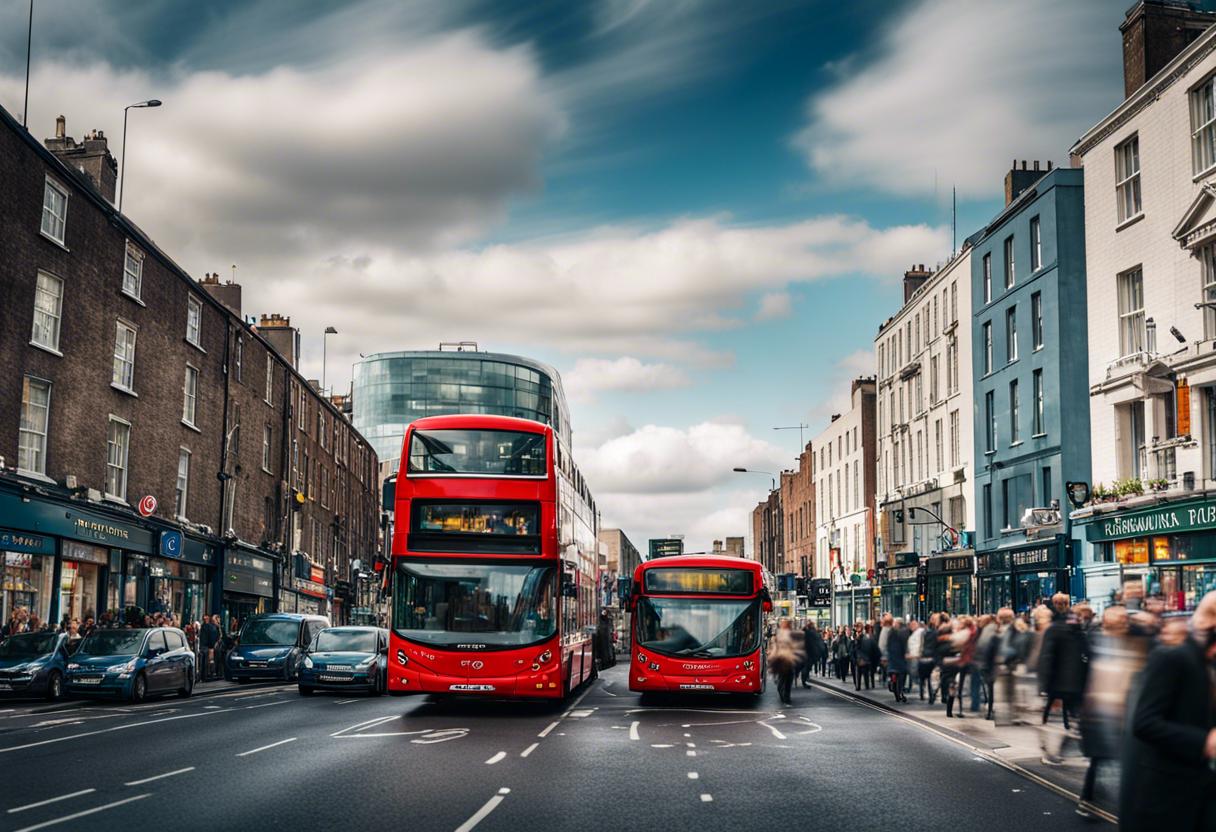A century ago, the head of Dublin Metropolitan Police presented a strategy to address the emerging problem of traffic congestion in the city: eliminate Nelson’s Pillar. Furthermore, he suggested removing all the statues on Sackville Street. In Gen WRE Murphy’s vision, the cause of the traffic problem in Dublin was the gridlock in College Green. By subtracting the statues on what is currently known as O’Connell Street, room would be made to allow vehicles to move unimpeded, thereby solving the city’s traffic dilemma.
This idea was put forward at an October 1924 hearing on Dublin’s traffic complications. In the subsequent hundred years, an array of factors would be blamed for the city’s traffic problems: the tram system, buses, equine transport, cyclists, pedestrian traffic, mothers, schools, slow drivers, fast drivers, insufficient parking, excess parking, Trinity College, narrow streets, bus lanes, traffic signals, etc.
In the early 20th century, Dublin was home to an expansive tram system, a significant amount of horse-drawn transport, and claimed to be “the most cycling-friendly city in the world”. This would inevitably make way for cars.
The dawn of automobiles came in the late 1890s when the first petrol car, a Benz Velo, was imported into Ireland by a Dubliner known as John Colohan. By 1911, over 5,000 cars, buses, and lorries had been listed in the country.
With the rise in popularity of motor vehicles, the authorities saw the necessity to make room for cars. By 1930, the officials came to the decision that the way the trams were operating across the O’Connell Bridge was leading to serious congestion.
Although the city’s traffic situation briefly eased with the opening of Butt Bridge in June 1932, the issue soon re-emerged. In an attempt to tackle the problem, the city officials introduced a range of one-way systems, crossing zones, and restricted streets in 1937.
However, the new program was ill-received by businesses, specifically the Irish Master Hairdressers’ Guild who were concerned that their patrons would now struggle to fulfil their “hairdressing needs”.
Despite efforts, the issue of traffic persisted in the city until war-time restrictions in the Second World War curtailed driving, culminating in a surge of bicycles taking over the city streets. Post-war, approximately 15,000 private cars were back on the roads, reinstating the status quo.
The once commonplace trams of Dublin had become distant recollections by the 1960s, but the issue of traffic jams was still very much present. An expert was called upon to carry out a comprehensive analysis. Professor Max Erich Feuchtinger from Stuttgart, Europe’s standalone professor of traffic engineering, was appointed to scrutinise the traffic problem and give guidance to the Dublin Corporation on any potentially necessary further investigations. Unfortunately, he passed away before he could conclude his task. It was Karl-Heinz Schaechterle who then took up Feuchtinger’s mantle, suggesting in a 1965 report a vision for future roadways involving segregated carriageways, overpasses, underpasses and unique junctions designed to divert drivers clear of the city centre.
Demolition of Nelson’s Pillar by the IRA in the following year was argued to be benefiting urban traffic management. But by then, the traffic problem had escalated tremendously. The year 1971 saw over 158,000 vehicles registered in Dublin, while cyclist numbers in the “most cycling city in the world” fell by 80 per cent.
Public transport too faced issues. In 1971, a trial bus lane was initiated in Fairview that lasted for five days. This provoked the Motorists Protection Branch to react with threats of leading a civil disobedience movement.
By the 1990s, the Dublin Transport Office was forecasting a “disorderly future” unless they could persuade drivers to stop using their cars. However, changing people’s habits was easier said than done.
A sentiment echoed by Owen Keegan, the contemporary director of traffic at Dublin Corporation. He expressed scepticism saying that, even if Dublin Bus were to provide door-to-door service, including school drop-off for children and a lavish champagne breakfast in premium conditions en route to the city centre, individuals would still avoid taking the bus.
In the years that have passed, tram services have once again appeared on Dublin’s avenues and the recently established M50 has transformed into the most congested motorway in all of Ireland. The preceding weeks have marked the implementation of an innovative traffic initiative, the newest effort by officials to lessen the gridlock in Dublin. Will the plan succeed? That remains uncertain. And if it falls short, the city council could always consider the removal of the Spire as a potential solution. It’s a possibility.

